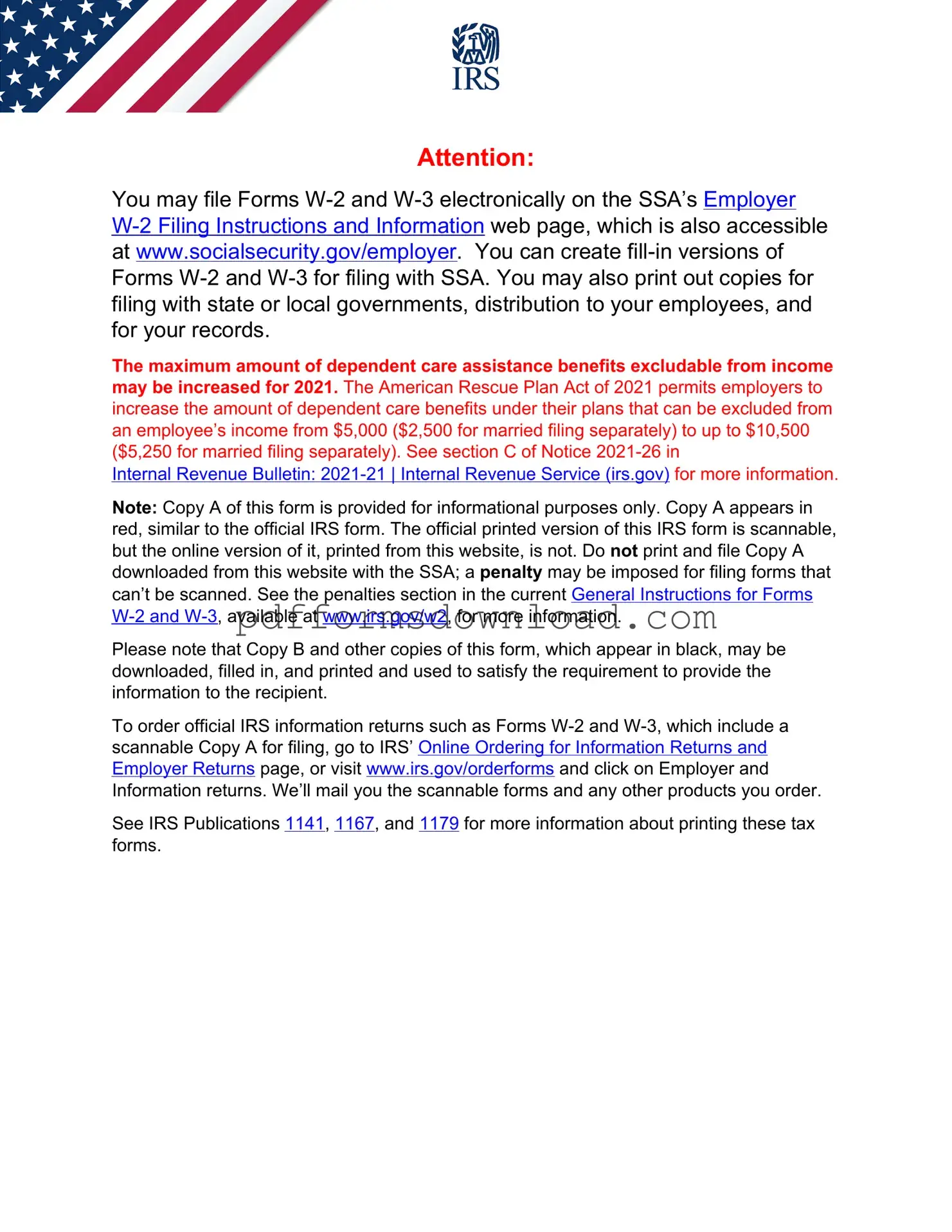What is the IRS W-2 form?
The IRS W-2 form, also known as the Wage and Tax Statement, is a document that employers provide to their employees. It reports the employee's annual wages and the amount of taxes withheld from their paycheck. This form is essential for employees to file their income tax returns accurately.
Who receives a W-2 form?
Any employee who earns wages, salaries, or tips from an employer should receive a W-2 form. If you worked for a company and received payment, you should expect to get this form. Employers are required to send out W-2 forms to their employees by January 31 of each year.
How do I use the W-2 form when filing my taxes?
When you file your taxes, you'll use the information from your W-2 form to report your income and calculate your tax liability. The form includes important details such as your total earnings and the taxes that were withheld. Make sure to keep it handy while filling out your tax return.
What should I do if I don’t receive my W-2 form?
If you haven't received your W-2 by mid-February, reach out to your employer. They may have sent it to the wrong address or it could be lost in the mail. If you still cannot obtain it, you can contact the IRS for guidance on how to proceed. They can help you file your taxes using Form 4852, which serves as a substitute for the W-2.
What information is included on the W-2 form?
The W-2 form contains several key pieces of information. This includes your name, Social Security number, employer's details, total wages earned, and the amount of federal, state, and other taxes withheld. It may also show contributions to retirement plans or other benefits. Each box on the form has a specific purpose, so review it carefully.
Can I access my W-2 form online?
Yes, many employers now provide electronic access to W-2 forms through payroll or HR websites. If your employer offers this option, you can log in to view and download your W-2. If you have trouble accessing it online, contact your HR department for assistance.
